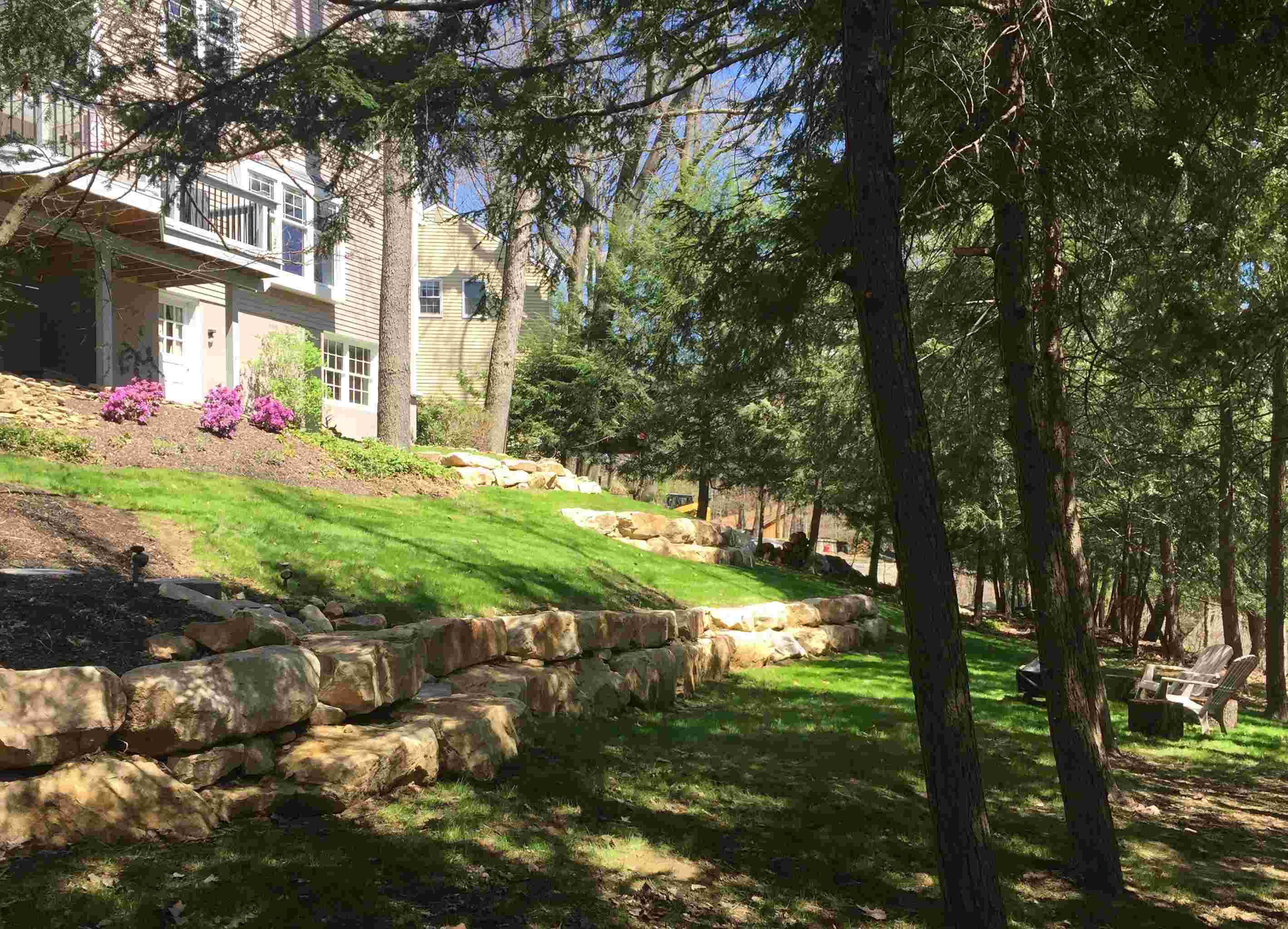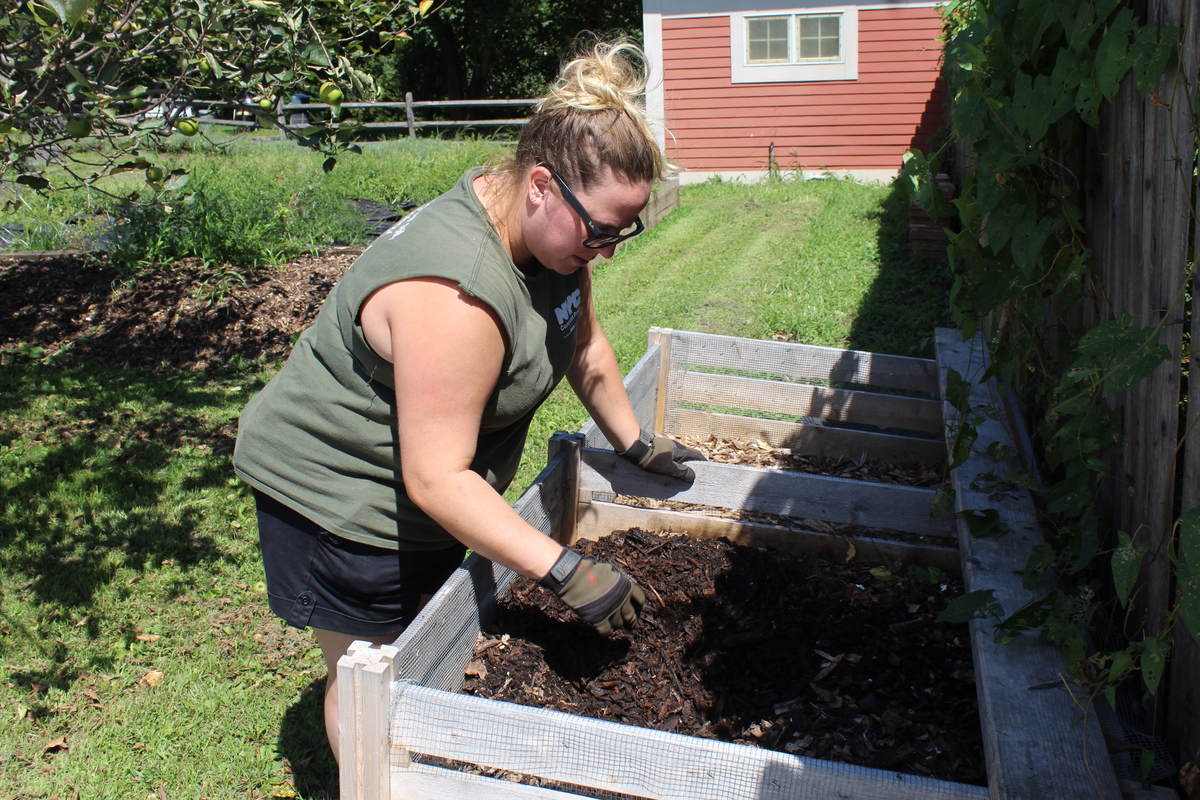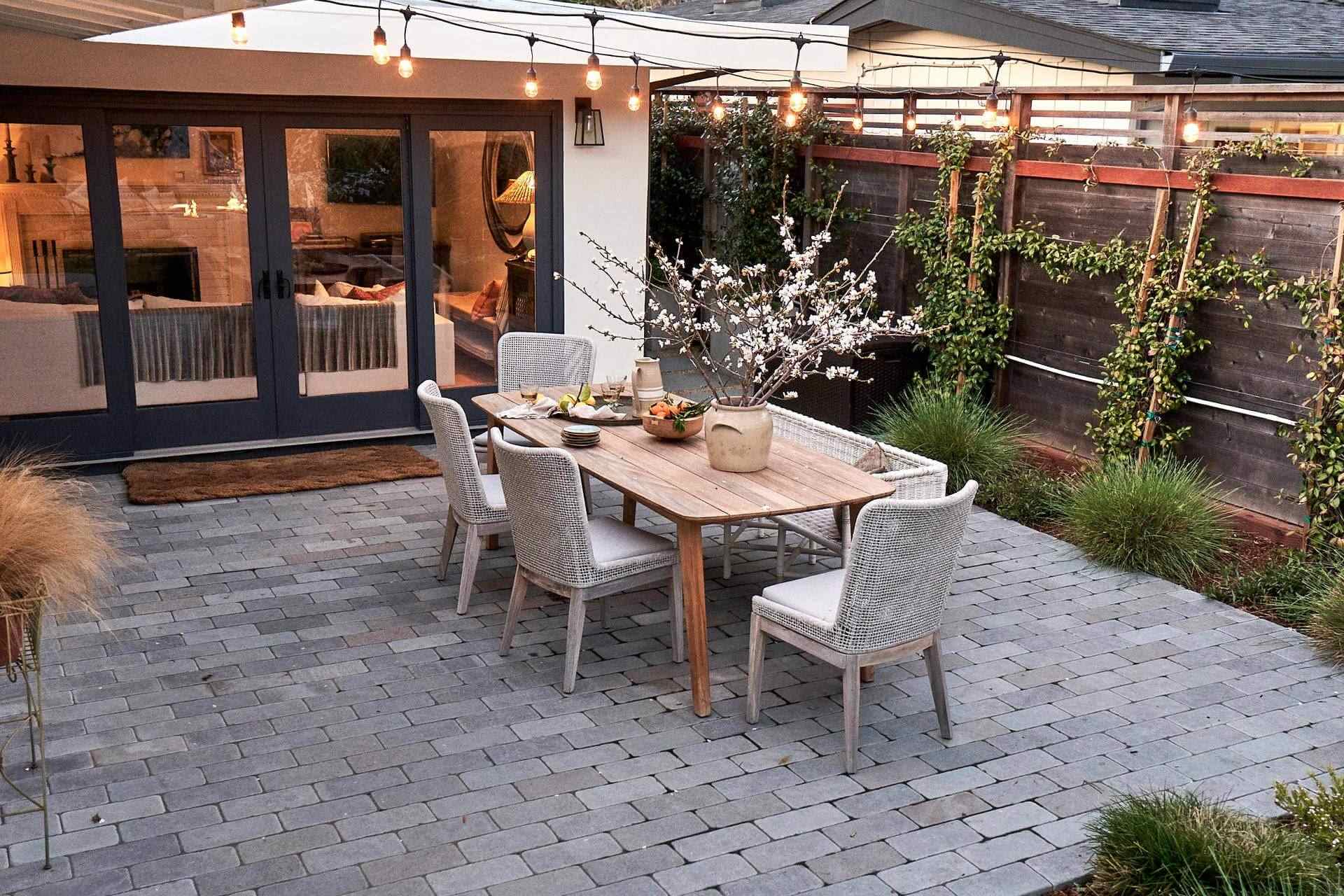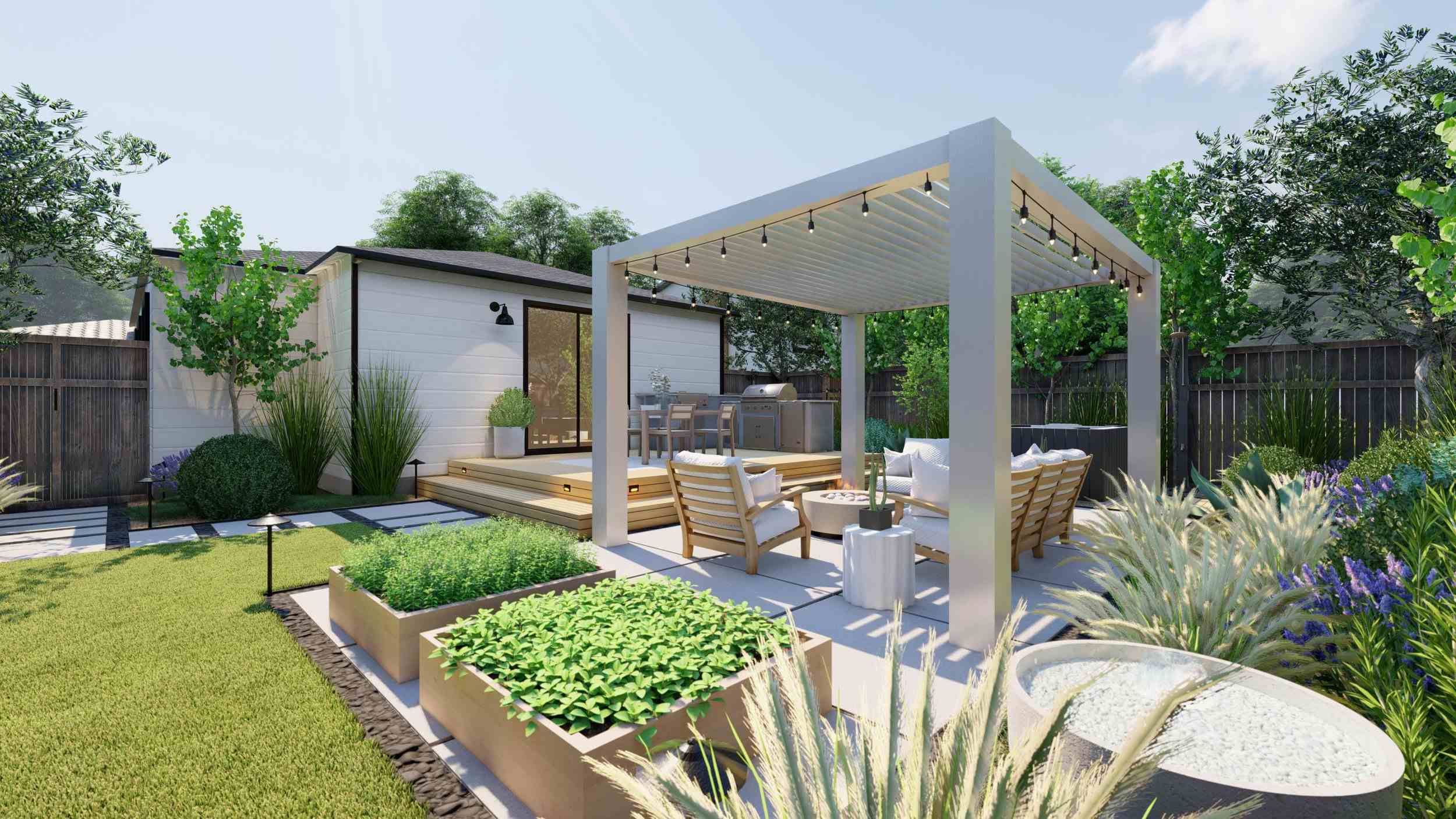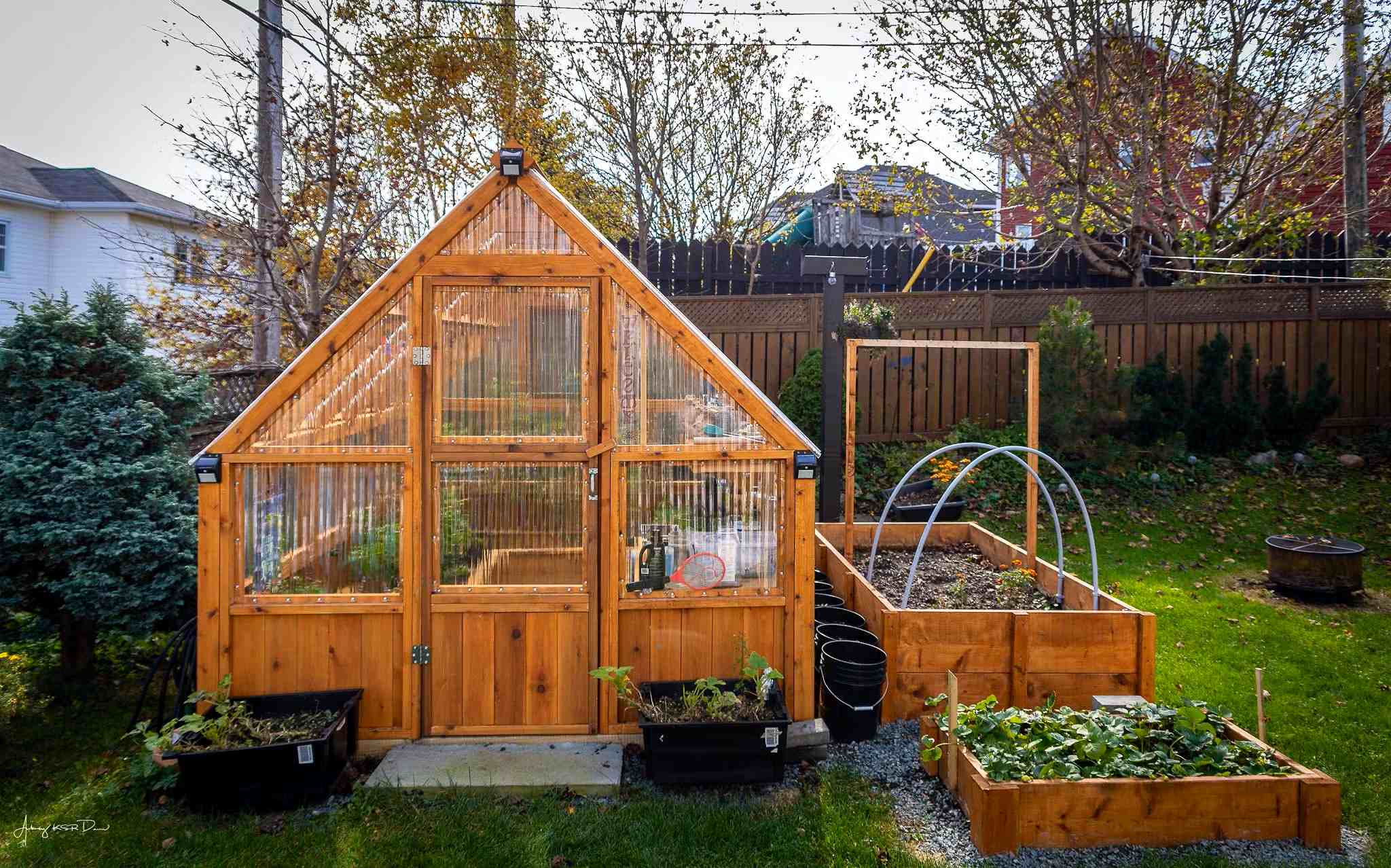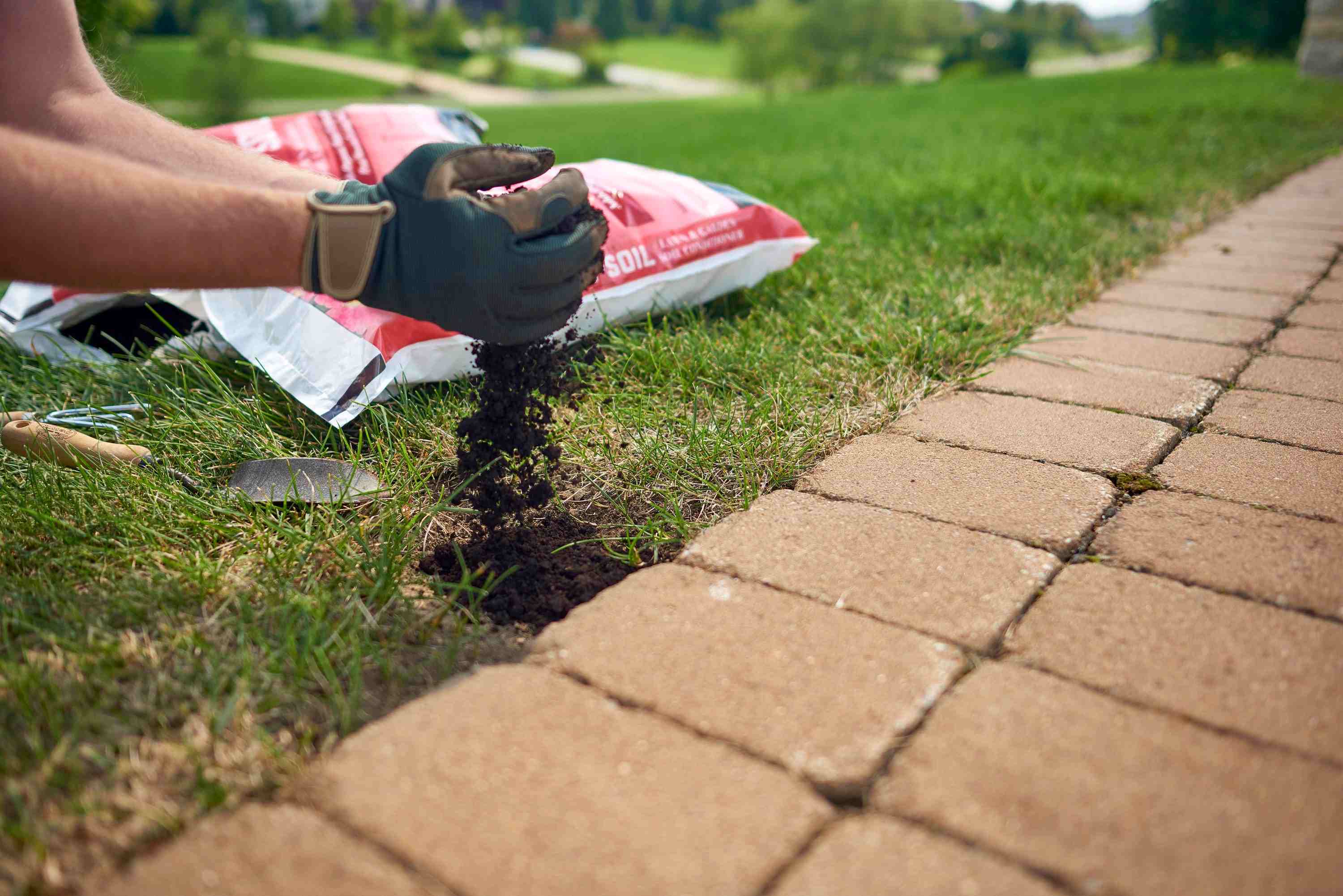Home>Gardening Techniques>DIY Projects>How To Unclog Backyard Drain
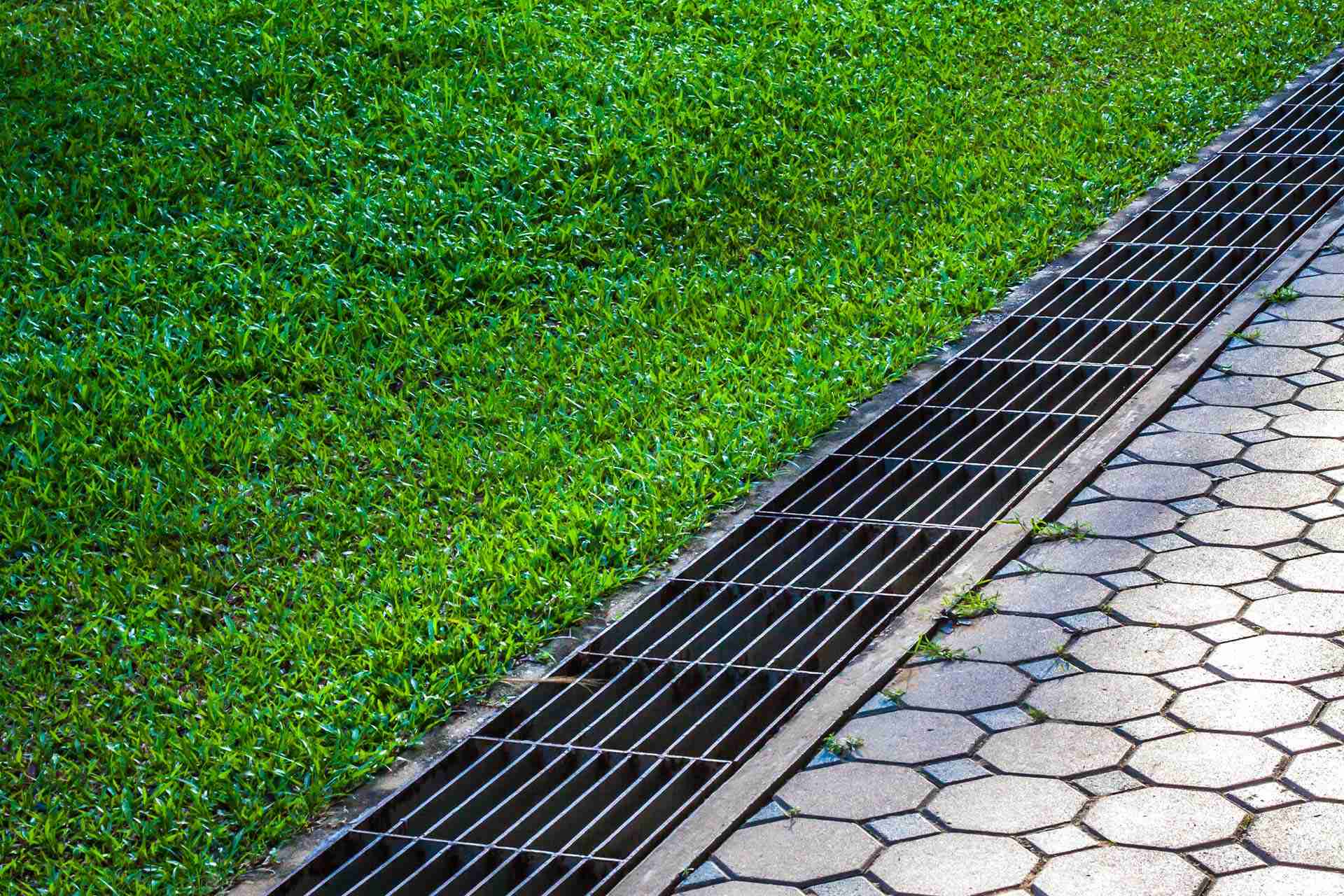

DIY Projects
How To Unclog Backyard Drain
Modified: January 22, 2024
Looking to tackle DIY projects? Learn how to unclog your backyard drain with these easy and effective tips. Say goodbye to standing water in your outdoor space!
(Many of the links in this article redirect to a specific reviewed product. Your purchase of these products through affiliate links helps to generate commission for Chicagolandgardening.com, at no extra cost. Learn more)
Table of Contents
Introduction
Having a well-maintained backyard is a source of pride for homeowners, but a clogged backyard drain can quickly turn this pride into frustration. A clogged drain can lead to stagnant water, bad odors, and even flooding, making it essential to address the issue promptly. Unclogging a backyard drain may seem like a daunting task, but with the right knowledge and tools, it can be a manageable DIY project.
Understanding how your backyard drain system works is crucial before attempting to unclog it. In this article, we will guide you through the process of identifying and repairing a clogged backyard drain, ensuring the water flows freely through the system once again.
Knowing the signs of a clogged backyard drain is the first step in tackling this DIY project. You may notice slow drainage or standing water in your backyard, unpleasant smells emanating from the drain, or even gurgling noises coming from the plumbing system. These indications are clear indicators that your drain requires attention.
Before starting any DIY project, it’s essential to take precautions and adhere to safety measures. Make sure to wear gloves, eye protection, and clothing that covers your arms and legs. Additionally, turn off the power supply to any electrical outlets or appliances near the work area to prevent any accidents.
Now that you’re prepared with the necessary precautions, let’s gather the tools and materials you’ll need for this project. Having the right equipment will make the unclogging process more efficient and effective. Some of the required items include a plunger, plumber’s snake, bucket, wrench, and pipe cleaning solution.
Understanding the Backyard Drain System
The backyard drain system is an essential component of your home’s plumbing, responsible for carrying away water and preventing flooding or water damage. It consists of a network of pipes and drains that collect and divert water from your backyard to a designated drainage area.
The main component of a backyard drain system is the drainpipe, which is typically buried underground. It is connected to various sources of water, such as rain gutters, downspouts, and surface water runoff. The drainpipe is designed to carry away excess water to prevent pooling and potential damage to your property.
Downstream from the drainpipe, there is a drain cover or grate that prevents large debris from entering the system. This grate helps to filter out leaves, twigs, and other objects that may clog the drainpipe. However, despite this barrier, clogs can still occur over time due to smaller debris and sediment accumulation.
At the end of the drainpipe, there is a drainage or disposal area, such as a dry well or a drainage ditch. This area is designed to absorb and disperse the excess water safely into the ground, preventing flooding or erosion in your yard. It is important to ensure that this area is clear and functioning properly to maintain the efficiency of your backyard drain system.
Understanding the layout and components of your backyard drain system is crucial for effectively unclogging it. By familiarizing yourself with how the system works, you will be better equipped to identify potential clogs and determine the most appropriate method for unclogging.
It is also worth noting that backyard drain systems can differ in design and complexity. Some may have additional components, such as catch basins or sump pumps, which further aid in diverting and managing water flow. If your backyard drain system has any unique features, it is important to consider them when addressing clogs or maintenance.
Signs of a Clogged Backyard Drain
A clogged backyard drain can cause a range of issues, from minor inconveniences to significant water damage. It’s essential to recognize the signs of a clogged drain early on to prevent further complications. Here are some common indicators that your backyard drain may be clogged:
- Slow Drainage: If you notice that water is draining slowly from your backyard or pooling around the drain, it could be a sign of a clog. The water may take longer to disappear, leaving behind puddles or even causing flooding in extreme cases.
- Unpleasant Odors: A foul smell coming from your backyard drain is another sign of a clog. Decaying organic matter and stagnant water can create a pungent odor that is hard to ignore. This smell may permeate your yard, making it unpleasant to spend time outdoors.
- Gurgling Noises: If you hear unusual gurgling or bubbling noises coming from your plumbing system, it could indicate a clog in your backyard drain. These sounds typically occur as air tries to escape through the blockage, creating vibrations and disruptions in the water flow.
- Overflowing Gutters or Downspouts: The gutters and downspouts connected to your backyard drain can also provide clues of a clog. If you notice water overflowing from the gutters or downspouts during rainfall, it could indicate that the water is not draining properly due to a blockage in the system.
- Visible Debris or Blockage: Sometimes, a clogged backyard drain may be visibly apparent. If you notice leaves, twigs, or other debris collecting around the drain cover or grate, it is a clear indication of a potential blockage. Additionally, if the drain cover itself is damaged or compromised, it can impede the flow of water.
Recognizing these signs early on can help you take prompt action to unclog your backyard drain. Ignoring the issue can lead to more severe problems, such as water damage to your property, foundation issues, or even damage to your plumbing system.
Precautions and Safety Measures
When it comes to unclogging a backyard drain, taking precautions and adhering to safety measures is essential to ensure your well-being and prevent further damage. Here are some precautions and safety measures to keep in mind before starting the unclogging process:
- Wear Protective Gear: Before getting started, put on a pair of gloves, safety goggles, and protective clothing. This will protect your hands, eyes, and body from any potential harm, such as sharp objects, chemicals, or debris.
- Turn Off Power Supply: If there are any electrical outlets or appliances near the work area, switch off the power supply to avoid the risk of electric shock. Water and electricity do not mix, so it’s important to prioritize your safety.
- Use Proper Tools: Ensure that you have the right tools for the job and that they are in good working condition. This may include a plunger, plumber’s snake, wrench, bucket, and pipe cleaning solution. Using the correct tools will make the unclogging process more efficient and minimize the risk of causing further damage.
- Work in a Well-Ventilated Area: If you are using any chemical solutions, make sure you are working in a well-ventilated area to avoid inhaling harmful fumes. Open windows and doors or use fans to increase airflow if necessary.
- Follow Instructions: Read and follow the instructions on any chemical products or tools you are using. Improper use of these substances can be hazardous to both your health and the environment. Also, be cautious of mixing different chemical products as they can produce dangerous reactions.
- Avoid Excessive Force: When using tools to unclog the drain, avoid applying excessive force. This can damage the pipes or cause them to burst, leading to more significant issues and costly repairs.
- Seek Professional Help if Needed: If you are unsure about how to proceed or if the clog seems severe, it’s best to seek professional help from a licensed plumber. They have the expertise and experience to safely and efficiently unclog your backyard drain.
Remember, safety should always be a top priority when taking on any DIY project, including unclogging a backyard drain. By following these precautions and safety measures, you can minimize risks and ensure a smooth and safe unclogging process.
Tools and Materials Needed
Before embarking on unclogging your backyard drain, it is important to gather the necessary tools and materials. Having the right equipment at hand will make the process more efficient and effective. Here are the essential tools and materials you will need:
- Plunger: A plunger is a versatile tool that can help in dislodging minor clogs. Make sure to use a plunger with a flat base for the best results.
- Plumber’s Snake: Also known as a drain auger, a plumber’s snake is a long, flexible metal cable with a corkscrew-like tip. It is used to reach deep into the drainpipe and break up stubborn clogs.
- Bucket: A bucket is handy for collecting water and debris during the unclogging process.
- Wrench: A wrench is necessary for disconnecting and reconnecting any pipe connections, particularly if you need to access the drainpipe or other plumbing components.
- Pipe Cleaning Solution: There are various pipe cleaning solutions available in the market that can help dissolve minor clogs and clear debris. Make sure to follow the instructions on the product and use it safely.
- Gloves and Safety Goggles: It is important to protect your hands and eyes while working with potentially harmful chemicals or debris. Nitrile or rubber gloves, along with safety goggles, are recommended.
- Bucket of Water: Keeping a bucket filled with water nearby is useful for testing the water flow and flushing out the drain after using any cleaning solution or tools.
- Old Towels or Rags: These will come in handy for cleaning up any spills or messes that may occur during the unclogging process.
- Flashlight: A flashlight will help you inspect the drain more effectively, especially if it is located in a dark or hard-to-reach area.
- Dust Mask: If you are working in a confined or dusty area, a dust mask will protect your respiratory system from inhaling any debris or harmful particles.
By having these tools and materials ready, you will be well-equipped to tackle the task of unclogging your backyard drain. Remember to use them safely and follow any instructions provided with the tools and cleaning solutions.
Step-by-Step Guide to Unclog a Backyard Drain
Unclogging a backyard drain can be a manageable DIY project with the right approach. Here is a step-by-step guide to help you clear the clog and restore proper drainage:
- Assess the Situation: Start by identifying the location of the clog. Examine the drain cover or grate for any visible debris or blockage. This will help you determine the most appropriate method for unclogging.
- Clear Surface Debris: Use gloves and rags to remove any visible debris from the drain cover or grate. This will ensure that the water can flow freely and prevent further blockages.
- Attempt Plunging: If the clog is relatively minor, a plunger can often do the trick. Place the plunger firmly over the drain, ensuring a tight seal, and push down and pull up rapidly several times. This action creates suction that may dislodge the clog.
- Try Using a Plumber’s Snake: For more stubborn clogs, use a plumber’s snake. Insert the snake into the drainpipe and rotate it to break up the blockage. Be cautious not to use excessive force to avoid damaging the pipes.
- Apply a Pipe Cleaning Solution: If the clog persists, consider using a pipe cleaning solution. Follow the instructions on the product carefully, as different solutions may have varying application methods and recommended contact times.
- Flush with Water: After using a pipe cleaning solution or any other unclogging method, flush the drain with a bucket of water. This will help clear out any remaining debris and ensure that the water flows freely.
- Monitor Drainage: Keep an eye on the drainage in your backyard over the next few days to ensure the clog has been fully resolved. If you continue to experience issues, it may be necessary to seek professional assistance.
- Take Preventive Measures: Once your backyard drain is unclogged, take preventive measures to avoid future clogs. Regularly clean the drain cover or grate, keep gutters and downspouts clear of debris, and be mindful of what goes down the drains in your backyard.
Remember, if at any point you feel unsure or the clog seems severe, it is best to contact a professional plumber who can provide expert guidance and assistance.
Alternative Methods to Unclog a Backyard Drain
If the conventional methods of unclogging your backyard drain, such as plunging or using a plumber’s snake, do not yield satisfactory results, there are alternative methods you can try. Here are a few alternative techniques to consider:
- Hot Water Flushing: Boil a large pot of water and carefully pour it down the drain. The hot water can help dissolve or dislodge certain types of clogs, particularly those caused by grease or soap buildup.
- Baking Soda and Vinegar: Create a natural cleaning solution by combining baking soda and vinegar. Start by pouring half a cup of baking soda followed by a cup of vinegar down the drain. Cover the drain and let the mixture sit for around 30 minutes. Then, flush it with hot water to clear the debris.
- Wet-Dry Vacuum: If you have a wet-dry vacuum, you can use it to create suction and remove the clog. Set the vacuum to the wet setting and cover the drain with the hose attachment. Turn on the vacuum and let it suck out the debris causing the blockage.
- Pressure Washing: If you own a pressure washer, it can be a powerful tool for clearing stubborn clogs in your backyard drain. Attach a sewer jetting nozzle to the pressure washer and carefully insert it into the drainpipe. Start with low pressure and gradually increase it to break up the blockage.
- Chemical Drain Cleaners: Chemical drain cleaners can be effective in clearing some clogs, but they should be used as a last resort due to their potential environmental and health hazards. Be sure to read and follow the instructions carefully and use caution when handling these products.
- Seek Professional Help: If the clog remains persistent despite your best efforts or if you are uncomfortable using alternative methods, it is advisable to call a professional plumber. They have the expertise and tools to handle even the most stubborn clogs safely and efficiently.
Keep in mind that the effectiveness of alternative methods may vary depending on the nature of the clog and the specific characteristics of your backyard drain system. It is important to assess the situation and choose the method that seems most appropriate for your particular circumstance.
Remember to prioritize safety and use caution when attempting any DIY unclogging methods. If uncertainty or potential risks arise, it is always best to consult a professional plumber.
Preventing Backyard Drain Clogs
Prevention is key when it comes to keeping your backyard drain free from clogs. By implementing some simple preventive measures, you can minimize the risk of future clogs and maintain optimal drainage in your outdoor space. Consider the following tips to prevent backyard drain clogs:
- Regular Maintenance: Make it a habit to inspect and clean your backyard drain regularly. Remove any debris, leaves, or twigs that may accumulate on the drain cover or grate, as these can easily cause clogs.
- Install a Drain Cover: Consider installing a drain cover or grate with small holes. This will help prevent larger debris from entering the drainpipe and causing blockages, while still allowing water to flow freely.
- Clear Gutters and Downspouts: Keep your gutters and downspouts clear of leaves and debris. Regularly clean them to prevent any buildup that can eventually find its way into your backyard drain system.
- Avoid Flushing Debris: Be mindful of what goes down the drains connected to your backyard drain system. Avoid flushing large amounts of debris, such as grass clippings, garden waste, or pet fur, as these can lead to clogs.
- Dispose of Cooking Fats Properly: Do not pour cooking fats, oils, or grease down the drain. These substances can solidify and cause clogs in your drainpipe over time. Instead, dispose of them in a designated container and dispose of them accordingly.
- Use a Strainer: Place a strainer over the drains in your backyard to catch hair, small debris, or other potential clog-causing materials. Regularly clean the strainer to prevent buildup and ensure smooth water flow.
- Be Mindful of Outdoor Activities: When engaging in outdoor activities, such as gardening or landscaping, be mindful of where you wash tools or dispose of waste materials. Avoid washing soil or excess materials into the drains, as they can accumulate and cause clogs.
- Educate Household Members: Teach everyone in your household about the importance of proper drain usage and what should and should not go down the drains. Make it a collective effort to prevent clogs and maintain a well-functioning backyard drain system.
By adopting these preventive measures, you can significantly reduce the likelihood of clogged backyard drains and the subsequent inconvenience and expense they can cause.
Remember, maintenance and preventive actions are essential for the long-term health of your drainage system. Regularly assessing and addressing any potential issues can save you from significant problems down the road.
Conclusion
Unclogging a backyard drain can be a challenging task, but with the right knowledge and tools, it is a manageable DIY project. By understanding the backyard drain system, recognizing the signs of a clogged drain, and taking precautions to ensure your safety, you can successfully address and resolve drain clogs.
Throughout this article, we have explored various methods to unclog a backyard drain, from using a plunger and plumber’s snake to trying alternative techniques. Each method has its advantages and effectiveness depending on the severity of the clog and the characteristics of your drain system.
Prevention is key to avoiding future backyard drain clogs. Regular maintenance, proper waste disposal, and being mindful of what goes down the drains will significantly reduce the risk of clogs and keep your backyard drainage system running smoothly.
However, if you are unsure or the clog persists despite your efforts, it is always best to seek professional assistance. Professional plumbers have the expertise and experience to handle complex clogs and ensure the long-term functionality of your backyard drain system.
Remember, safety should always be a top priority when unclogging a backyard drain. Take precautions, use the necessary protective gear, and follow the instructions of the tools and products you use.
By following the step-by-step guide and implementing preventive measures, you can keep your backyard drain free from clogs and enjoy a well-maintained outdoor space. With a little effort, you can prevent drainage issues and maintain the efficiency of your backyard drain system for years to come.
